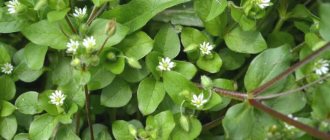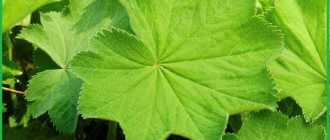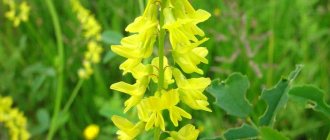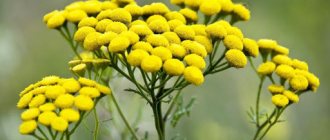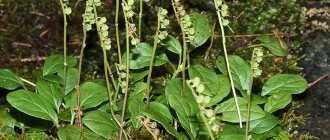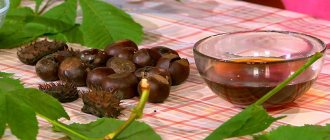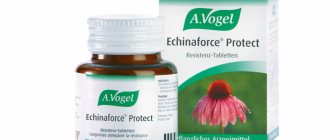Burnet - Sanguisorba officinalis L. - is a perennial herbaceous plant from the Rosaceae family with a thick horizontal rhizome up to 12 cm long. This is a beautiful plant of the Rosaceae family. People call it redhead.
Branched stems grow from a thick horizontal woody rhizome with large branched roots. The stem of the burnet is erect, from 20 cm to 1 m high, branching in the upper part. It is ribbed on the outside and hollow on the inside.
At the end of the stem, large decorative dark crimson flowers are formed, which are collected in a head. The flowers are small, bisexual. There is no corolla, the calyx is purple, four separate. The burnet flower has four stamens with red anthers. Pistil with superior ovary, filiform style and capitate stigma.
Burnet blooms all summer long: from June to the end of August. The fruit of the plant is a tetrahedral nut 3-3.5 mm long.
The leaves are compound, odd-pinnate, large, and have 7–25 lobes. The lobes are oblong with a heart-shaped base, glabrous, dark green above, bluish-green below.
Composition and release form
The roots and rhizomes of burnet have medicinal properties, which is why they are harvested. Plant tissue contains several beneficial substances:
- tannins;
- organic acids – gallic, ellagic, oxalic;
- saponin;
- essential oil;
- starch;
- sterol;
- gentriacontan;
- vitamin C.
The product is produced in the form of crushed plant materials, which are packaged in convenient filter bags. They can be stored at normal room temperature. The place should be dry and dark. Keep away from children and keep out of sunlight. The shelf life, subject to the described rules, is 5 years from the date of production.
What is burnet? Varieties
Burnet (Sanguisorba officinalis) belongs to the Rosaceae family. It received this name because of its main medicinal property of quickly stopping bleeding.
Depending on the place of distribution, it has many dialectical names: fallen grass, bedrenets, bark grass, hernia grass, pellets, cones, redhead, red roots, meadow grass, bloodsucker, orchard grass, head grass, cold grass, row grass, dry zolotitsa, wild rowan, forest mountain ash , silver leaf, owl arrow, horror potion, blackhead, black grass.
The genus Burnet includes about 20 species of this plant, which have a similar botanical description and have similar pharmacological properties. The most common representative of this group among wild perennials is burnet (P. sanguisorba). It owes its name to the darkening of the inflorescences during the period of seed ripening. It is smaller in size, which is why its second name is small burnet.
photo of a plant in its natural habitat
The distribution area of the plant is extensive. In our country, it is found in the temperate zone from its western borders on the East European Plain to the Far East.
Breeders have long been interested in this plant, so they have developed several cultivated varieties that are grown not only to obtain plant raw materials, but also as ornamental perennials:
- Tanna;
- Rhesus;
- Menzies;
- Pink Brashes;
- Red Zander;
- Chocolate tip.
The burnet flower can become a decoration for any flower garden. Decorative varieties have large inflorescences, which are presented in different colors.
burnet has medicinal properties and excellent decorative qualities, which allows it to be used not only for medicinal purposes, but also for landscape decoration
What it looks like and where it grows
This plant is a herbaceous perennial. It has a thick woody rhizome on which thin roots form. Hollow stems, reaching 1 m in height, are slightly branched in the upper part, ending in dense oval-cylindrical spike-shaped inflorescences. The flowers are small, dark red. The calyx is four-parted, without petals, in the center there are 4 stamens and 1 pistil.
Long petioles with large leaves extend from the rosette. The leaves are complex, have many oblong, non-paired plates with a serrated edge. The stem leaves are smaller and sessile.
Burnet plant blooms in June-August. The fruits are dry. Each flower contains 1 seed. It reproduces well with them and fragments of rhizomes. In nature, its maximum life expectancy is up to 40 years. When cultivated in one place, it grows up to 8-10 years.
The plant loves slightly acidic, medium-humus soils. Inhabits the slopes and bottoms of ravines, near natural reservoirs and temporary watercourses, prefers meadow communities.
The areas where this grass grows should be well lit by the sun. In the shade, its generative shoots do not develop well.
For medicinal purposes, the roots of the plant, which have the greatest healing power, are harvested
Collection and processing of medicinal raw materials
The rhizome along with the roots is harvested as a medicinal raw material; The optimal time is the flowering phase.
In order to preserve the species, it is not recommended to dig up single plants. For harvesting, areas with their mass distribution are selected. To renew the population, a few specimens are left untouched. Secondary procurement of raw materials in the same place can be carried out no earlier than after 10 years.
The burnet rhizomes and roots are carefully freed from the soil, then thoroughly washed in cold water. The stems are trimmed. The rhizomes are divided into pieces no larger than 20 cm, lightly dried in air and sent for drying - in the sun, in an electric dryer, or in an electric oven at a temperature of +50ºС with the door open.
When drying on metal baking sheets or wire racks, you should use parchment paper so that when in contact with metal, the raw material does not lose its healing properties. Dried rhizomes become brittle. It is recommended to store them in paper or cloth bags for no more than 5 years. High-quality raw materials have an astringent taste and no odor.
nature has enriched the plant with a rich chemical composition that can support human health
pharmachologic effect
Burnet root contains a whole range of useful substances that are used in the chemical industry and pharmaceuticals:
- coloring and tanning components;
- essential oils;
- starch;
- saponins;
- flavonoids;
- organic acids (ellagic, oxalic, gallic, ascorbic, etc.);
- vitamin C;
- micro- and macroelements.
The herb has an astringent, tanning, enveloping effect, has a positive effect on the functioning of the cardiovascular system and gastrointestinal tract, has anti-inflammatory properties, and has a calming effect on the nervous system.
Release form and storage conditions
In pharmacies you can buy rhizomes and roots of Burnet officinalis. Plant raw materials are most often packaged in packages weighing up to 100 g. Packaging of 1, 2 and 5 kg is possible. For the convenience of consumers, some companies package the product in filter bags of 1.5 g. The number of them in a package can be 20 or 30 pieces. In dry rooms, the product can be stored for several years without losing its pharmacological properties.
burnet, thanks to the biologically active components it contains, has a lot of medicinal effects
Pharmacology
The name of the plant is due to the fact that it has a hemostatic effect. Burnet also provides astringent, antiseptic and anti-inflammatory effects. The plant contains various substances. Thus, vitamin C has the following beneficial properties:
- strengthens the immune system;
- increases resistance to harmful factors, including poisoning;
- has antioxidant properties;
- prevents cell destruction;
- improves skin condition;
- activates collagen synthesis;
- helps absorb iron;
- strengthens the walls of blood vessels;
- helps normalize blood pressure;
- prevents fatigue.
The tannins that make up burnet are also beneficial for the body:
- antibacterial effect;
- slowing down the aging process;
- removal of toxic substances from the body;
- antioxidant effect;
- prevention of cancer;
- improved digestion;
- anti-inflammatory effect;
- removal of kidney stones;
- prevention of leukemia.
Saponins have the following medicinal properties:
- removing excess fluid from the body;
- mild laxative effect;
- stimulation of the synthesis of corticosteroids;
- lowering cholesterol levels;
- strengthening the immune system;
- expectorant action.
Sterols also have a similar effect. Even in small quantities, they have been proven to help lower bad cholesterol levels. Therefore, taking burnet prevents the development of atherosclerosis, as well as stroke and heart attack.
Root and rhizome
The storehouse of healing properties of the burnet is contained in its roots, reaching a length of 12 cm, characterized by a woody, thick and horizontal rhizome.
The dried and ground root is used in the treatment of the following diseases:
- diarrhea of various origins;
- bleeding in various organs (uterus, lungs, intestines, stomach, kidneys, etc.);
- heavy menstruation;
- ulcerative colitis;
- chronic enterocolitis;
- inflammation of the oral cavity;
- various skin lesions;
- hemoptysis.
The root is used in various forms: lotions, compresses, powder; sitz baths (for hemorrhoids); douching (for gynecological ailments).
Contraindications and side effects
In some cases, taking the drug is contraindicated:
- individual intolerance to any component;
- children up to 17 years of age inclusive;
- pregnancy (all trimesters)
- lactation.
If a tendency to increased blood clotting or thromboembolism has previously been observed, burnet should be used with caution and only in consultation with a doctor.
In rare cases, itching, swelling, rashes and other allergic manifestations are possible. During long-term therapy, increased blood clotting may also occur. In such cases, treatment should be suspended and a doctor should be consulted.
Description of the plant
Burnet is a perennial herb belonging to the Rosaceae family. It is distinguished by a long and slender stem up to 120 cm high; the leaves are feather-shaped and located in the basal part of the stem.
The flowers are small, brown-red in color, growing on long stalks and grouped into heads. The grass is characterized by a powerful root system, which is considered rich in healing properties.
Burnet grows in well-moistened soil, near rivers and lakes, and in flooded meadows. It blooms from June to August. At this time, useful flowers are collected, from which tea is usually brewed. The roots are collected in the autumn, when the plant has already faded and fruits appear in the form of nuts with seeds.
Instructions for use
The therapy uses an aqueous infusion of burnet roots. To prepare it, proceed as follows:
- Take 3 filter bags (content weight 4.5 g).
- Place in a glass or enamel glass.
- Pour 200 ml of boiling water.
- Close the lid and leave for 15 minutes.
- Squeeze and bring to a total volume of 200 ml.
- Take half a glass 4 times a day.
The day before use, the decoction should be stirred or shaken. It is not subject to long-term storage - as a last resort, you can put the glass in the refrigerator for no more than 2 days.
Medicinal properties of burnet
Burnet, the medicinal properties and contraindications of which are known to traditional healers, is valued for its hemostatic abilities, therefore it is recommended in the treatment of gynecological problems, bleeding caused by hemorrhoids.
Other healing characteristics:
- bactericidal;
- natural antiseptic;
- astringent;
- relieves inflammation;
- heals;
- antispasmodic;
- calming.
Leaves and stems
The leaves and stems contain fewer tanning elements, but are no less medicinal. Their main purpose is to stop blood loss.
These parts are used in the following cases:
- bleeding of various origins;
- hemoptysis;
- gum damage;
- tuberculosis.
The leaves and stems have wound-healing properties, so they are recommended to be used fresh for minor skin damage.
Burnet decoction
Burnet, the medicinal properties and contraindications of which you need to know before use, is the raw material for the decoction:
2 tbsp. l. the root part is heated in a water bath in 1 tbsp. water 30 min. The resulting broth is allowed to cool (10 minutes), filter, squeezing out the remaining mass well. Add boiled water (warm), bringing the volume of liquid to 200 ml. Drink 1 tbsp of the product on a full stomach. l. no more than 6 rubles/day. Store refrigerated for no longer than 2 days.
Properties of the decoction: against microbes, stops bleeding, astringent effect.
Please note that it is recommended to use enamel dishes to prepare this drink.
Use in cooking
The leaves of the young plant taste very pleasant - they resemble cucumbers. Some people detect the taste of melon and even nuts in the grass. But the older the plant gets, the more bitter its greens become. Dry weather also contributes to the bitter taste.
Oriental cooks often add club-shaped burnet inflorescences to soups to give them a special taste. In Spain, fresh herbs are added to lemonades and wines for a delicate mint aroma. In many European cuisines, young burnet leaves are used for sandwiches, salads, casseroles, and also for flavoring sauces and vinegars.
The plant goes well with cheese, tomato sauces, eggs, basil and oregano. In some countries this herb is used in brewing.
The climacteric period in a woman's life is considered as a transition from the reproductive phase of life to old age [12]. One of the earliest and most striking manifestations of the pathology of menopause is climacteric syndrome (CS), a symptom complex characterized by a combination of neuropsychic, vegetative-vascular, neuroendocrine disorders that sharply reduce the quality of life and are predictors of many later disorders, including cardiovascular and metabolic disorders. metabolic [2]. The most common symptom of CS is hot flashes, which, according to various authors, occur in 50-85% of women [5, 7, 11] and persist from 3 months to 15 years or more. Until recently, it was believed that hot flashes do not cause significant damage to health, but only reduce the quality of life. However, when using modern neuroimaging techniques at the time of tide, a sharp decrease in blood flow was revealed in certain areas of the brain, including the hippocampus, which is responsible for memory mechanisms [6]. In this regard, short-term but frequent episodes of ischemia can contribute to the development of degenerative processes in certain areas of the brain by reducing the number of neurons and synapses, which should especially be taken into account in women with unfavorable heredity: the risk of vascular dementia, Alzheimer's disease. In addition, it is believed that hot flashes may be indicators of latent cardiovascular diseases [10].
CS is a classic indication for traditional hormone therapy (HT) using natural estrogens or their analogues. However, there are contraindications and limitations to the use of HT due to the risk of developing pathology of the endometrium and mammary glands in some patients, and an adverse effect on the thrombogenic potential of the blood. In this regard, alternative methods of correction of CS, which primarily include herbal remedies, are becoming increasingly important. According to P. Albertazzi et al. [3], the number of cases of use of herbal medicines in the USA and England is 60-80%. For CS, herbal preparations belonging to the group of phytoestrogens are often used.
Phytoestrogens
- plant substances that can be divided into three main categories: isoflavones, lignans and coumestans. Phytoestrogens are found in many plants (legumes, soybeans, red clover) [1, 8]. Soy is a major dietary source of isoflavones, but it contains less estrogen-like substances compared to red clover. Among the Asian population, the incidence of breast, endometrial and prostate cancer, as well as the incidence of cardiovascular diseases, is lower than in Western countries [9]. It is believed that this is due to the consumption of large amounts of vegetable protein, which is an integral part of the national diet. It is possible that isoflavones, in addition to estrogenic activity, have other properties that are currently being actively studied.
The isoflavone of red clover extract (REC) has weak estrogenic activity, functionally close to 17β-estradiol, which allows it to bind to estrogen receptors, but 100-1000 times weaker. Such properties of phytoestrogens suggest a different degree of their effect on target organs than estrogens. EKC contains four types of isoflavone: biocanin A, formononetin, genistein and deidzein. The activity of all four substances is greater at estrogen receptor-β (ER-β) than at estrogen receptor-α (ER-α). This may underlie the tissue specificity of ECC [4]. Despite the relevance of phytoestrogens therapy, there is currently a lack of large studies assessing their effectiveness and safety during long-term use. In this regard, we conducted a randomized, blind, placebo-controlled study, the purpose of which was to evaluate the effectiveness and safety of long-term use of a drug containing EKC for the treatment of CS in comparison with placebo.
Material and methods
The study included 70 women suffering from symptoms of CS of moderate severity in the period of peri- and early postmenopause, whose average age was 51.3 ± 5.8 years, and the duration of postmenopause was 3.02 ± 1.4 years. All patients were randomly divided into two groups: Group 1 (main) consisted of 35 women with moderate CS who received EKK (feminal) at a dose of 40 mg once a day for 12 months. Group 2 included 35 patients with moderate CS who received placebo for 3 months. A comprehensive clinical and laboratory examination of patients included assessment of CS symptoms, results of hormonal, biochemical and lipid profile studies, endometrial thickness according to ultrasound, results of endometrial pipette biopsy, and the condition of the mammary glands according to mammographic examination. Determination of the levels of the main neurotransmitters in blood plasma and urine was carried out at zero (2 weeks before the start of the study), first (start of the study), second (3 months after the start of the study), third (6 months after the start of the study), fourth (after 12 months after the start of the study) visits.
Criteria for inclusion in the study.
The study included peri- and early postmenopausal patients aged 45 to 60 years with moderate CS symptoms, who signed an informed consent, had contraindications to classical HT, or refused to take classical HT.
The exclusion criteria from the study were the following:
— presence of estrogen-dependent tumors during the inclusion period;
— taking hormone replacement therapy for less than 3 months before inclusion in the study;
— the presence of diseases of the gastrointestinal tract and severe hepatobiliary complex;
— the presence of central nervous system diseases, mental illnesses that limit the correct adherence to the medication regimen;
- intolerance to the drug;
- pathology of the thyroid gland.
Methods for assessing effectiveness and safety.
The severity of CS symptoms was assessed using the modified menopausal index (MMI), calculated based on the score of CS symptoms
(Table 1).
At the first, second and fourth visits, blood was drawn to study the levels of estradiol, luteinizing hormone, follicle-stimulating hormone, prolactin using the chemiluminescence method. The levels of total cholesterol, high-density lipoprotein (HDL), low-density lipoprotein (LDL), triglycerides, and atherogenic coefficient were assessed at the first and fourth visits using the spectrophotometric method. The levels of creatinine, total protein, glucose, total bilirubin, direct bilirubin, urea, alkaline phosphatase, aspartate aminotransferase, alanine aminotransferase, gamma-glutamyl transpeptidase were examined at the first and fourth visits using the spectrophotometric method. The levels of the main neurotransmitters in blood plasma and urine (serotonin, norepinephrine, dopamine) were determined using high-performance liquid chromatography during the first, second and fourth visits in the laboratory of the State Scientific Center for Social and Forensic Psychiatry named after. V.P. Serbian. Endometrial thickness was assessed using ultrasound at the first, second, and fourth visits. Endometrial biopsy was performed using a standard technique using vacuum sampling (endometrial aspiration biopsy using a Pipelle curette) at the first visit and at the end of the study (fourth visit). Height and body weight were measured at the first, second, third, and fourth visits. All patients underwent mammography to study breast density before inclusion in the study (if mammography was performed within 12 months before the patient was included in the study, it was not repeated) and 12 months after treatment with the study drug. All mammograms were evaluated centrally and retrospectively to identify any changes from baseline. The density of the mammary glands was assessed in accordance with the classification of J. Wolfe (1976).
Results and discussion
A decrease in the frequency and severity of all symptoms of CS was found in patients taking EKK at a dose of 40 mg/day (feminal), compared with those in patients in the placebo group (Table 2).
The dynamics of MMI in patients of group 1 when taking EKC showed a significant decrease in MMI values, lasting up to 6 months of treatment. In the placebo group, after 3 months of therapy, there was a tendency to increase MMI values, which was regarded as a negative dynamics of CS symptoms. CS therapy in these patients was subsequently continued with the active drug.
By the 6th month of treatment, the effectiveness of therapy in EKC patients, according to MMI, decreased to the initial value in 76% of observations and was maintained for 1 year in only 24% of patients. The data obtained indicate that the maximum effect of EKC use lasts for 6 months and lasts up to 12 months in only 24% of patients.
When comparing MMI in the main group and the placebo group, we found a statistically significant difference after 3 months of therapy (see Table 2):
respectively, MMI 34.85±6.77 and 42.92±6.3 (p<0.01).
To a greater extent, the drug had an effect on neurovegetative symptoms, the manifestations of which in patients of group 1 during 6-month therapy significantly decreased compared to those in the placebo group.
A positive effect was also achieved in relation to the “classical” manifestations of estrogen deficiency - hot flashes and sweating by the 6th month from the start of taking EKC. To a lesser extent, taking the drug affected increased fatigue, decreased memory and libido, which are traditionally classified as androgen-dependent manifestations. The severity of metabolic symptoms remained virtually unchanged.
Based on the results of the hormonal study we obtained, we did not detect significant changes in the levels of the main gonadotropins while taking EKC compared to these indicators in the placebo group.
The level of estradiol (E2) in the main group also did not change. However, in the placebo group, a significant decrease in E2 was detected, which indicates the progression of age-related changes. When comparing the dynamics of E2 levels in both groups, we did not establish any significant differences. The pathogenetic basis for the effectiveness of treatment of patients with CS with EKC may be changes in serotonin levels. An increase in serotonin levels was found in the first 3 months of taking EKC (Table 3).
However, by the 12th month of therapy, a tendency towards its decrease was noted, which coincided with the clinical manifestations in 76% of patients.
When comparing serotonin levels in both groups, significant differences were revealed after 3 months of therapy. Urinary serotonin levels changed similarly. There were no significant changes in the level of norepinephrine in the blood plasma and urine in patients of the main group and the placebo group. Positive dynamics were demonstrated by dopamine levels in blood plasma and urine (Table 4)
in the main group, which correlates with the effectiveness of therapy for 3 and 12 months. We did not find such changes in the placebo group.
When comparing the dynamics of changes in blood plasma dopamine levels in both groups, no significant differences were found.
Of particular interest was the study of the effect of EKC on the ratio of lipids in the blood plasma. When studying the dynamics of cholesterol, HDL, and LDL levels, no significant differences were found. However, by the 12th month of EKC therapy, triglyceride levels significantly decreased (p = 0.03), which apparently is the result of the positive effect of phytoestrogens on lipid metabolism.
The levels of other biochemical parameters (total protein, glucose, alkaline phosphatase, total bilirubin, liver enzymes) did not change throughout the observation period.
When analyzing ultrasound data for one year of taking red clover extract (Table 5)
A significant decrease in M-echo was detected 12 months after the start of therapy. When analyzing ultrasound data while taking placebo, no significant changes in endometrial thickness were detected.
Taking into account the data of the pathomorphological study, no negative effect of taking EKC on the endometrium was identified (see figure).
Figure 1. Results of pathomorphological examination of the endometrium (pipe biopsy) in patients of the main group (n=29).
All patients underwent a mammographic examination to determine breast density. As a result of a year of observation, mammographic density in patients of the main group in most cases did not change or there was a decrease in it.
Thus, the use of a drug containing EKC is effective for the treatment of moderate CS. Maximum effectiveness is observed by the 3rd month of taking the drug and persists up to 6 months of therapy in 76% of patients (p <0.01). However, in 76% of cases, the effectiveness of treatment decreases after 12 months of taking EKC, which requires an increase in the dose of the drug or its replacement.
Analyzing the results of our study, we suggested a possible mechanism of action of EKC, probably realized through the central serotonin and dopaminergic pathways with no effect on gonadotropin levels and insignificant estrogenic activity. In our opinion, phytoestrogens occupy their own niche in the treatment of CS symptoms and are not competitors to hormone replacement therapy.
conclusions
1. The results of our study allow us to conclude that treatment of patients with menopausal syndrome with red clover extract is safe with respect to the development of proliferative processes in the mammary gland and endometrium and does not require the addition of gestagens.
2. Additional positive changes in blood lipid composition obtained during therapy with red clover extract, combined with the absence of hepatotoxicity, expand the therapeutic possibilities of its use in patients with menopausal syndrome.
Use in herbal medicine
Herbalists use this tannin-rich plant to treat diarrhea, dysentery, ulcerative colitis and other gastrointestinal disorders. Preparations from fresh roots are applied to burn areas. But the most famous ability of the burnet is to stop bleeding. For this purpose, burnet has been used for many centuries in European and Oriental medicine. Herbalists prescribe remedies from this herb to women with heavy menstruation. The decoction and juice of the plant are used to heal wounds, treat eczema and hemorrhoids. Traditional healers also used burnet to treat tuberculosis. A decoction of this herb is useful for rinsing inflamed gums and swollen tonsils, rinsing eyes affected by conjunctivitis, and it is also good to drink to remove lamblia from the body.
Herbalists also knew about the ability of burnet to reduce body temperature during fevers. Modern herbalists, in addition to the hemostatic properties, also take into account the astringent effect of the herb. And cosmetologists and dermatologists use it to eliminate skin problems. It is useful to wipe the insect bite with grass juice.
In the ancient records of Chinese doctors, burnet is described as a remedy against gastrointestinal bleeding, periodontal disease, and also enhances potency.
In Eastern practice, this plant was used against plague and female diseases. Herbalists also use burnet to treat phlebitis and varicose veins.
Is it possible for children?
Burnet is allowed in childhood, starting from birth. Drinks made from rhizomes are recommended for diarrhea and other intestinal infections. The healing remedy will cleanse the body of harmful bacteria and viruses, improve the functioning of the digestive tract, restore the intestinal microflora, and also have a disinfecting effect.
The daily intake for children under 1 year should not exceed 200 ml , for older children - 400 ml.
Decoction for infants:
- Preparing the drink. 2 tsp. roots pour 1 tbsp. boiling water, simmer for 30 minutes, filter without insisting.
- Application. 25 drops drink is diluted in 1 tsp. cooled boiled water and give it to drink 30 minutes before meals 4 times a day. Duration - until complete recovery and then another week to consolidate the result.
- Effect. The baby's stool returns to normal and intestinal colic goes away.
Infusion for children over one year of age: steam 2 tbsp with a glass of hot water. l. ground roots, heat for 30 minutes, leave to brew for 1.5 hours, filter. Give 5 ml 4 times a day until complete cure, then continue the course for another week, reducing the frequency of doses first to 3, then to 2 times a day.
Burnet is recommended in the treatment of stomatitis (sore throat) and conjunctivitis in children:
- For the oral cavity. 1.5 tbsp. l. boil the roots in 200 ml of liquid, heat for 10 minutes, leave for 30 minutes, filter. Rinse up to 5 times a day.
- For eyes. Steam 1 tbsp with a glass of water. l. ground rhizomes, leave to simmer for 15 minutes. Leave for 2 hours, filter. Wipe both eyes with a sterile cloth soaked in the prepared product, up to 5 times a day.
Healthy herbal tea
Making burnet tea:
- Mix the rhizomes and leaves of the medicinal herb in equal proportions. Pour 1-2 tsp. mixture 250 ml of boiling water and drink a glass 2 times a day.
Healthy tea is also prepared from the flowers of the herb, using them alone or in combination with the root part/leaves.
